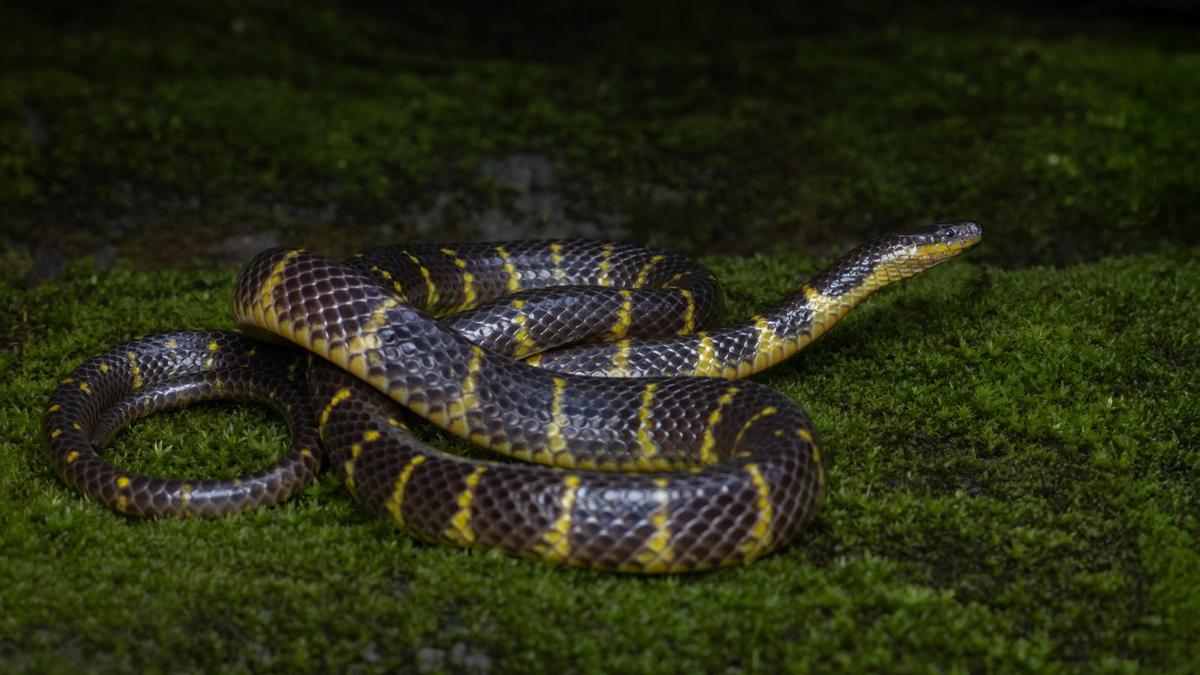Now Reading: New Rain Snake Species Discovered in Mizoram
-
01
New Rain Snake Species Discovered in Mizoram
New Rain Snake Species Discovered in Mizoram

Quick Summary
- A new snake species, the narrow-banded rain snake (smithophis leptofasciatus), has been discovered in mizoram’s tropical forest by researchers from Mizoram University and biodiversity conservation group Help Earth.
- Details of the revelation were published in Taprobanica: The Journal of Asian Biodiversity.
- Morphological and molecular analyses revealed that this snake is distinct from its relative,Smithophis bicolor. It possesses unique creamish-white or yellowish-lime bands on a shiny black body.
- The species was found inhabiting humid, shaded microhabitats near small streams at altitudes between 900-1,200 meters above sea level.Observations confirm its semi-aquatic, nocturnal lifestyle during monsoon season.
- Researchers recorded rare reproductive insights: a gravid female laid six eggs in captivity.
- The narrow-banded rain snake is the third Smithophis species described from Mizoram (after S. atemporalis and S. mizoramensis).
- Scientists emphasized Mizoram’s role as a biodiversity hotspot and recommended habitat assessments since the snake may be vulnerable to habitat degradation.
Indian Opinion Analysis
The discovery of the narrow-banded rain snake underscores India’s growing importance as a center for biodiversity research, particularly within regions like mizoram that are globally recognized as ecological hotspots. Such findings highlight India’s rich genetic diversity but also bring attention to urgent conservation challenges tied to deforestation and changing land-use patterns.
The inclusion of reproductive data adds scientific value to understanding herpetological ecology in such habitats. Though, with restricted ranges and dependency on pristine forests-a feature shared by manny species endemic to northeastern India-this new discovery highlights why targeted environmental policies are crucial for protecting vulnerable ecosystems.
Expanding biological surveys in underexplored areas like tropical Mizo forests could further uncover unknown eco-diversity while aiding habitat preservation for endemic life forms facing risks from human activity.
Read More: Source Link
























